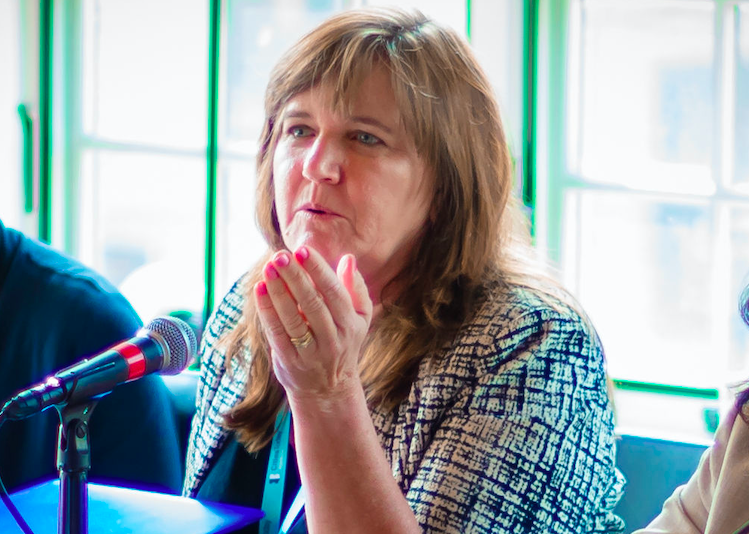
Photo: W Biederman / PFD Media
How cities are attracting tech talent
03 February 2020
by Christopher Carey
Jonathan Andrews explains how cities are looking to their own universities and colleges for the talent they need to drive innovation
When Michael Mayta, Chief Information Officer in the City of Wichita, posted two openings for a data analyst and data scientist in 2018 he received no applications for the scientist position and two for the analyst job.
“When they found out what our pay scale was, they both dropped out,” he explains.
In December 2018, to fill the void, he took the funding set aside for the positions to city council and proposed an MoU with Wichita State University to tap into the local student talent.
The university then put together a programme involving six students across multiple disciplines including management information systems, engineering, data science, and computer science.
One year later the city is busily building capabilities within the community.
“We’re getting work done right that we need to get done,” he says. “It’s a win-win scenario and so far the students have been able to collect data, categorise it, define it, and have started to manage it.”
He adds that not only is he using local talent but also developing it.

“Not only do we get the benefit of those kids coming in and help us build our data structures we’re also creating talent that hopefully will stay here,” he comments.
It’s not always about money
Difficulties in recruiting the right staff and retaining them are nothing new to cities. But by offering something more than monetary compensation, cities–in particular information and innovation departments–are testing new methods.
Steven Strauss, a lecturer and visiting professor at Princeton University’s Woodrow Wilson School, says that while cities could never compete with the private sector in terms of pay they “can use the emotional and morally satisfying card”.
He refers to a white paper produced by the Singapore government, which pays its public sector workers some of the highest salaries in the world. In the white paper, Salaries for a capable and committed government, the city-state chose to benchmark the entry MR4 Minister’s salary to the median income of the top 1,000 earners who are Singapore citizens but with a 40 percent discount to “signify the sacrifice that comes with the ethos of political service”.
“It effectively said that they didn’t have to match the private sector compensation levels. People like to feel they are doing something for society,” says Strauss.
He believes that now is a golden opportunity for cities to recruit as a lot of work is being done at the urban level around applying data and IoT and believes that this is a chance for a new recruit to be part of something interesting.
Jeanne Holm, Deputy CIO of Los Angeles, knows all too well the task of competing for university talent with companies like Google, Snapchat, Blizzard Games and Riot Games based in the city. On top of this, LA is facing 15,000 retirements in the next three years which will need to be replaced.
In 2017, to help overcome this, the city launched the Data Science Federation, a collaborative research partnership between the city and 18 LA colleges and universities. To date, it has helped launch over 40 projects that use data science to solve challenges through data-driven decision making and was the winner for governance and finance at the 2019 Smart City Expo awards in Barcelona.
Holm has been a professor at the University of California, Los Angeles for the last 25 years and was able to bring some useful insight in helping to establish the collaboration.
“My students can get bored easily in class because their work doesn’t have an impact,” she explains. “If I can give them real data and a chance to work with an organisation–like a mini internship inside of a class, that’s awesome. It’s homework for their hometown.”
She says until now the city has been able to achieve a 10 to 20 percent capture of the students into city positions and that the trend of tapping into universities is on the up.
“If they come in while they’re in college and get a little taste of what it really means to actually serve four million people there’s a huge cadre of students who are like, ‘I never thought it was going be like that,’ and they apply for a job,” explains Holm.
Another advantage of the programme is that older employees in city departments are exposed–through the students–to new methodologies and technologies where they can increase their data literacy.
Strauss adds that even if a graduate recruit leaves after two years, the relationship with the university would ensure a willing pipeline of candidates.
Recruiting experienced staff
Similarly, to attract experienced staff, or even young high-flyers, cities can compete by offering candidates the opportunity to manage a much bigger project and a much more challenging project which Strauss says, “you probably wouldn’t be getting in the private sector at a young age”.
At the other end of the experience scale, a key method would be to target the local woman or man “done good” who moved to another city, earned their money in the private sector, have a private sector pension lined up, but now feel inclined to move back and give something back to their community.
Strauss mentions one small US city which achieved this, and even though the new CIO took a large pay cut and the city couldn’t offer him a large budget, they could offer him flexibility and chose the people he hired.
“And if there is a talented person coming up through the system and they love the city, by all means promote them,” he adds.
Results
In Wichita, nearly 12 months into the programme Mayta reveals that he can now find out what he can create out of the data and how to better use it.
“They’ve been able to do some analytics around the data already collected,” he explains, for example, in helping to identify the most dangerous times for pedestrian accidents at cross walks.
An additional benefit is that the students are given more latitude by city departments–compared to full-time staff–and that the programme has built tech capabilities in the community. He is currently looking at more opportunities through the programme.
“I have conversations with those kids all the time and it is interesting to see them say, ‘I didn’t know you guys did this, this is cool’,” he says. “They’re making a difference, or at least have the ability to do something that matters. Most people don’t know the extent of what goes on in city halls.”
Holm adds that Los Angeles has shared its experience with 88 cities and is now interested in opening this further to other cities, including through the Cities Today Institute. This would include all procedures, the data sharing agreement, and other areas to help cities “get their tool-kit started”.
“It doesn’t cost anything and it’s easy to do,” she confirms. “We had to learn that so we don’t want other people to have to learn it!”







